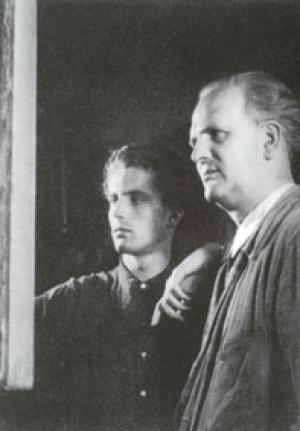
Michael & Edgar Ende


“The Mirror in the Mirror”
The relationship between Edgar Ende and his son, the writer Michael Ende is a very long and fascinating story. Michael Ende dedicated his book "Spiegel im Spiegel" (Mirror in the Mirror) - a collection of labyrinth-like stories, which are all interlocking with each other in a very mysterious way - to his father. In this book he realised in literature what his father realised in his paintings.
For Michael Ende, his father’s art was the starting point for his own poetic concept. Edgar and Michael Ende are two exceptional phenomena that can only be truly understood when viewed together. The phenomenon of a mirror reflected in a mirror could serve as a metaphor for understanding the two artists. Michael Ende began transcribing his father’s work as a child. He did not describe the content of the painting as in a retelling, but he tried to represent his father’s artwork in his own words. In this way, he created something entirely new for himself. Edgar Ende was, in turn, inspired by his son’s work. The two were like two sides of the same coin: through each one, one can come to understand the other.
Mirror in the Mirror is a culmination of mutual inspiration. Michael Ende’s stories create strong imagery, partly inspired by his father's paintings, and their pictorial power is reflected in Michael Ende’s lines.
“The observer completes the image – the Story is only completed in the reader”
Edgar Ende’s world of art is not immediately accessible; his drawings and paintings do not readily reveal their meaning to the viewer. Ende's pictures require the viewer to be prepared to enter into a dialogue with them, because they can only be deciphered in a dialogue of associations. The same applies to the stories of Michael Ende, who expects from his reader - just as the father expects from his viewer - not to perceive the story or the picture as a finished product or as a self-declaration of the artist. Both father and son assume that art only comes into being in the experience of the work of art by the viewer or the reader. The reader or the viewer is included in the creative process; he is a part of it. A none too easy task because it is necessary to “imagine” the world “presented” by the artist in one’s own consciousness or to let it come alive. A creative process through which the work created by the artist only then becomes a work of art.